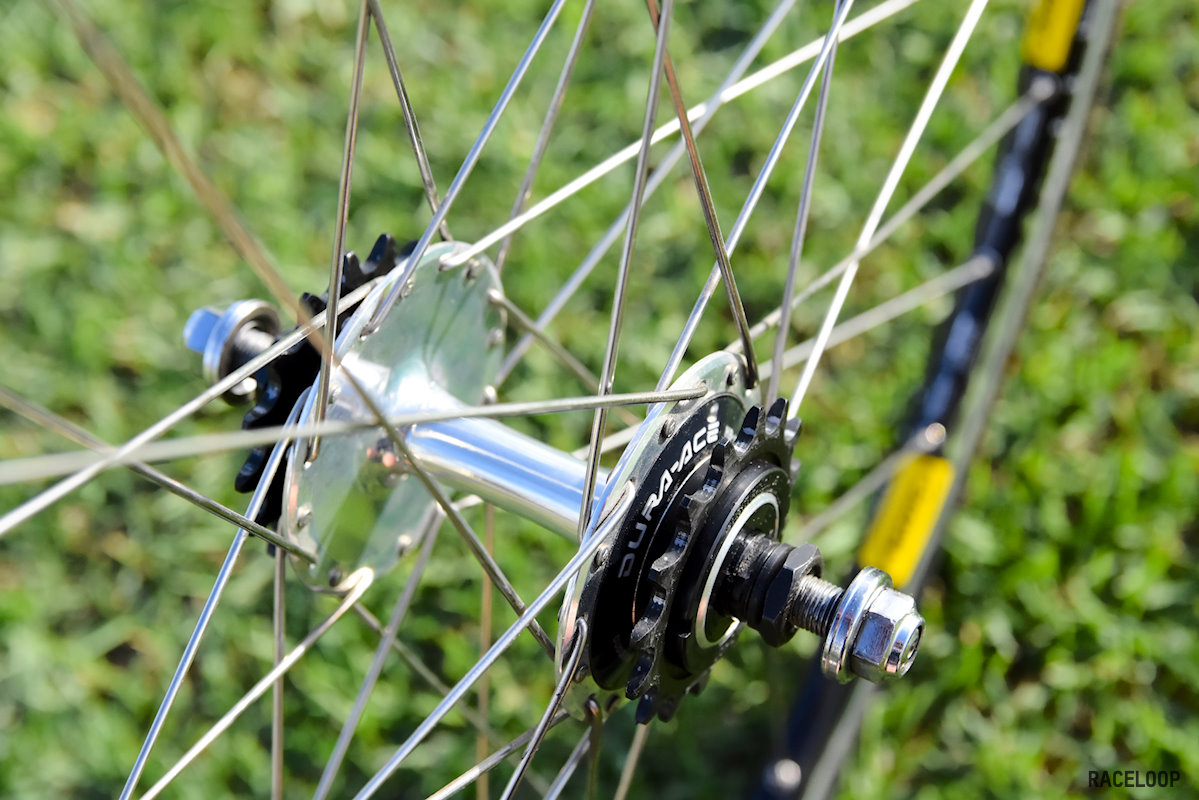
I’ve discussed in other articles about gearing and how it impacts performance. However for most riders, they simply want to keep it simple and have a hit out at their weekly club track meet.
Many riders prefer to keep the same sprocket on the back and use a different chainring for different events. For example a 48×14 for warmup and a 50×14 for racing OR a 46×15 for warmup and a 48×15 for racing etc. This is what I usually do. Use the Momnium Gear Calculator to help you.
As a faster alternative, rather than carry around a tote bag full of chain rings and sprockets an excellent alternative is to use a flip-flop hub. A flip flop is a hub with a sprocket on each side of the hub that can be simply turned around in the frame depending on which gear you need. Set up one side with your training cog and the other side with your race cog. The chain ring stays the same. You could then use 48×16 for warmup then swap the wheel around and change the chainring for 48×14 for racing and race-gear efforts. All you need to carry is a 15mm spanner.
Why does this work? In addition to being faster to set up, for every one tooth increase (deacrease) in chainring teeth at the front you are adding (subtracting) approximately 2 gear inches to your gear ratio. On the other hand, changes to the rear sprocket have a far greater impact. Adding (subtracting) one tooth to the rear sprocket decreases (increases) the gear ratio by approximately 6 gear inches. This is a huge difference that can be immediately felt. It turns a warm up gear into a race gear quickly, easily and with minimal fuss.
Although a flip flop set up probably won’t be suitable for your next World Cup, for many riders it’s a viable and simple setup.
Replacing the wheel in the frame
When replacing the wheel, one important thing to keep in mind is chain tension. The chain should be set as loose as possible without being able to be rolled off the chainring by hand. The key is to keep playing around with your setup until you achieve this tension. Once you’ve obtained this a few times you’ll quickly know how much alignment/tightening you’ll need. If the chain is too tight, the bike will make a noise and pedalling will feel harder than necessary. Too loose and the chain will come off. Tighten the wheel nuts up to around 40nm.
